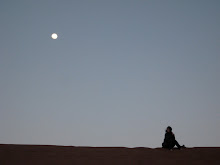In the viewing room where Rashaad Newsome’s video plays, a couple of women in their seventies sat and discussed which of his vogue dancer’s poses were similar to the positions they took in their yoga class. I found their enthusiasm for both voguing, a dance form evolved in gay ballrooms and clubs, and yoga incredibly endearing. More to the point, their presence marks one crucial difference between watching these videos at the crowded Whitney Biennial and watching them anywhere else: the conversation — between older women trying to put an underrepresented dance form into a context they understand, but also between the curator, critics, and whomever else has something to say and a platform from which to say it. At the level of intention, the Biennial is about conversation between particular works sharing space at the Whitney. If this is so, then it’s fair to say that the video works as a whole, no matter how understated they may be individually, present a dominating voice in the matter. It is, after all, 2010, and they speak in a technological language we understand. So then why doesn’t this dominating voice convince?
Perhaps because, given that it’s difficult to concentrate on a painting when it’s hung next to a flat screen TV, most of the video in the show is ghettoized on the third floor and shown individually in a maze of black box mini-theatres, hidden away so that the work can’t bounce off disparate ideas and mediums. Most of the video pocketed off in these little rooms can be categorized as performance, and its creators as performance artists in one way or another. Rashaad Newsome, Sharon Hayes, and Kelly Nipper are all known for their live works; Kate Gilmore isn’t, but her videos were included in the 100 Years [of Performance Art] show at P.S. 1 and historicized as such. Jesse Aaron Greene and Alex Hubbard show performance-based video that can also fit into the category. The overall conversation among these artists is about the body’s focus, its absence, its independent actions, its representations and its ability to speak and be heard with or without verbal languages. There is clearly a moment in history being captured by the inclusion of so many artists who use such similar formal strategies.
At least two of these artists present video works here that are examples of the most culturally relevant performance of 2010. Newsome’s vogue dancers take gendered movement as far out of context as possible, making the gestures themselves the stuff of abstraction. His references to a queer subculture are casual, not forced; he avoids didactic political statements and focuses instead on the intricacies of physical form. Sharon Hayes uses a comparable approach in her video installation Parole (2010). Documentary footage of her confrontational street performances play; she and others repeatedly read the contents of a politically charged love letter out loud. Alongside multiple views of the reading, we see at-home footage of the often visible but never speaking soundperson in the performance documents. The silence of this androgynous figure—whose presence is ostensibly about the role of the media in the dissemination of public speech—compounds the viewer’s inability to assign a conventional gender definition. Like Newsome, Hayes builds her piece out of component parts that are themselves highly charged representations. Ambiguous gender (Butch lesbian? Trans man?) is used here as raw material, providing an example of the kinds of nuance that the sound bite and other media filters destroy.
These deserving artists, however, are ill-served by the very show that sets out to celebrate them. Their works are less visible and meaningful here in this muddle of similarly constructed formats than they would have been if experienced live or even—surprisingly—streaming online. The Internet might even be considered an alternative art space, closer to the lofts where video and performance artists like Joan Jonas showed their work in the late 60s and 70s. Jonas herself, back in those days, rejected gallery and museum showings of her performance-based videos since she claimed that the old spaces were unsuitable for the transgressive new form. 2010 is as much about institutions bumbling through attempts to contain performance in museums as it is about the politics of speech and the languages of body-based abstraction that the artists themselves are concerned with.
Since these performances on video are, for the most part, non-narrative and oftentimes repetitive and durational, an important part of viewing them is actually watching the whole thing (imagine looking at just one corner of a painting, and judging it based on that). Next to no one actually does this; it guarantees fatigue. Critics, who must, might even label excellent works as “unendurable” or “tedious” when what they’re really responding to is an overwhelming amount of non-negotiable, repetitive, time-based viewing. (I’m thinking of the Boston Globe critic’s flat-out, generalized dismissal of these works.) Museums are institutions that were built to show paintings and sculpture. They were meant to freeze time. Is it any wonder time-based art suffers inside them?

No comments:
Post a Comment